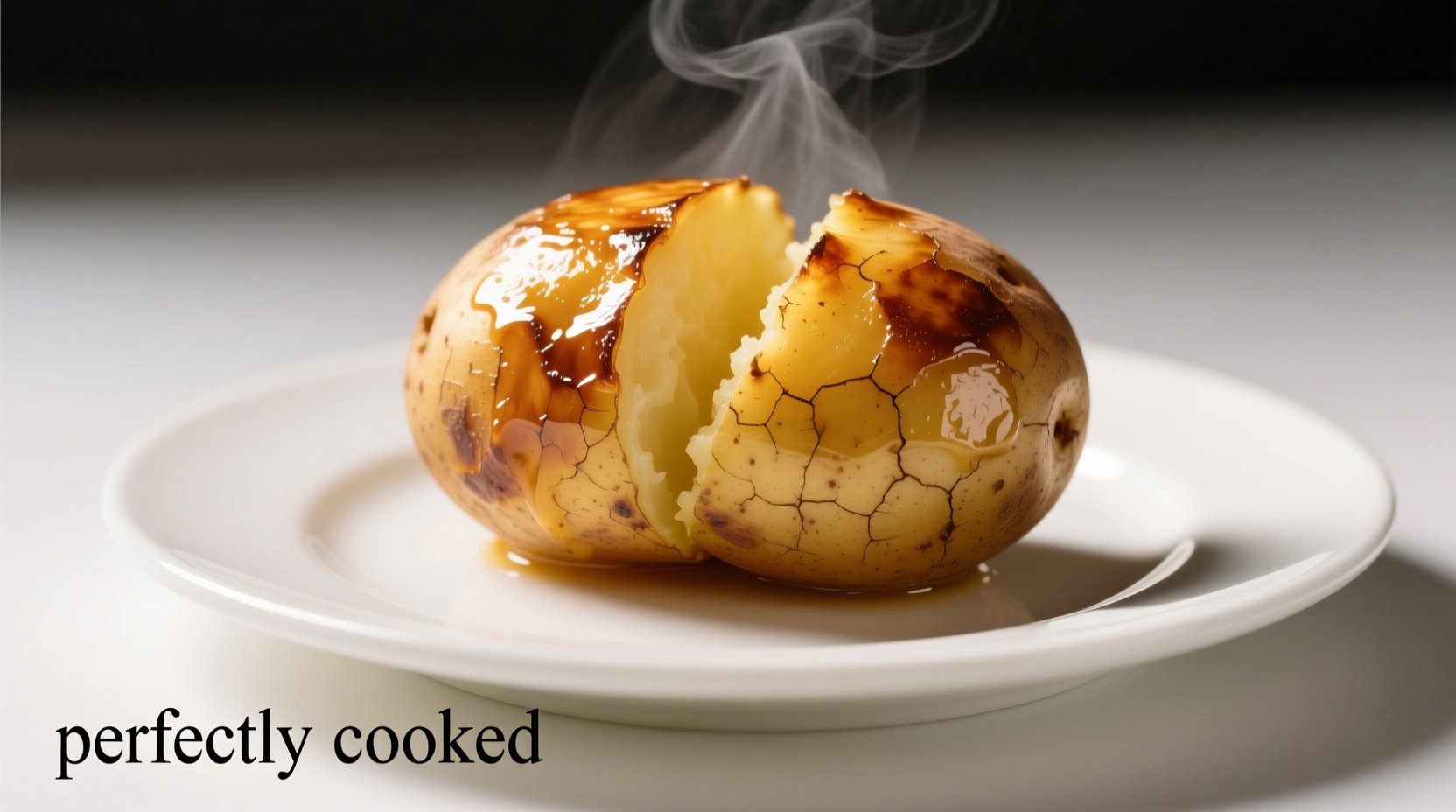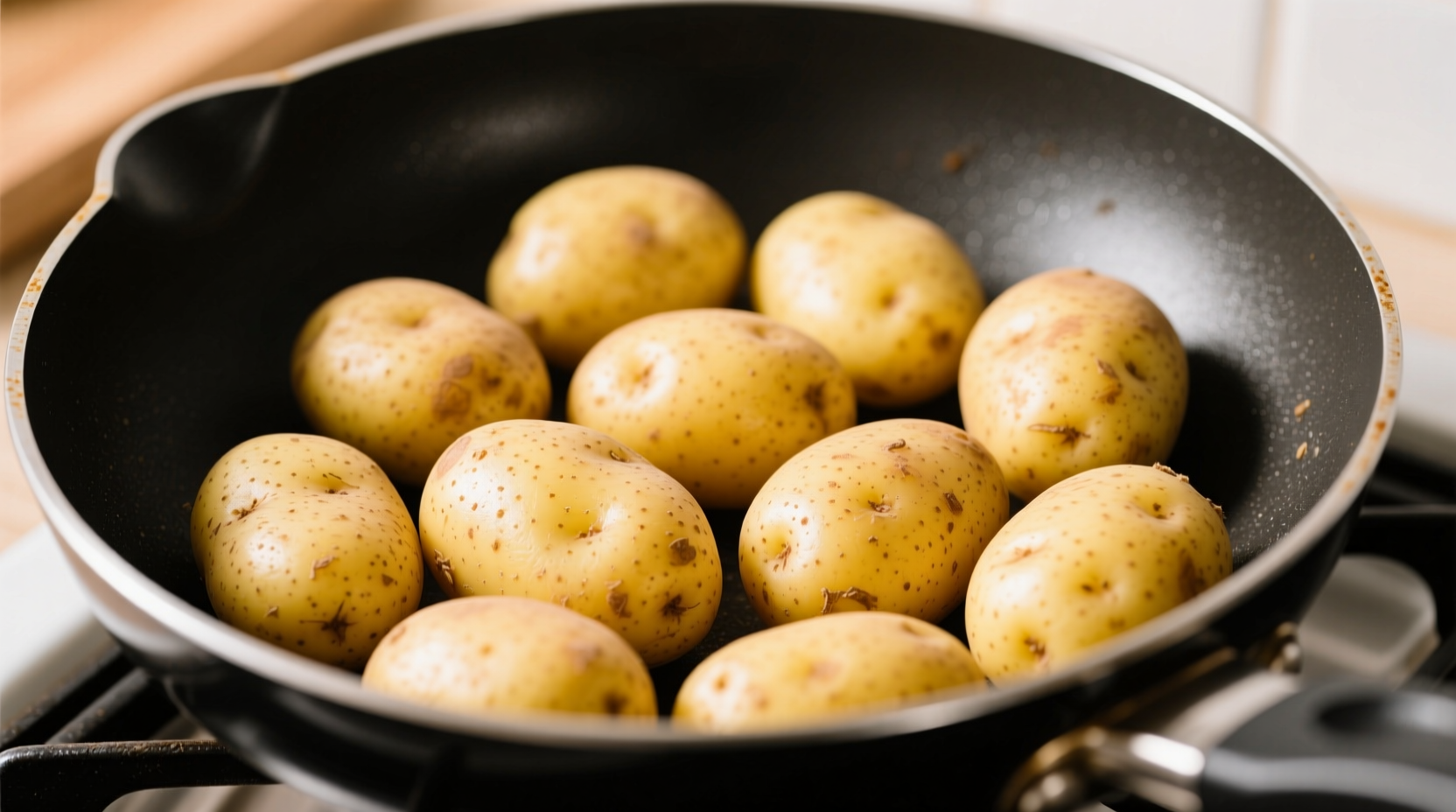Getting potato cooking times right separates satisfactory meals from truly exceptional ones. Whether you're preparing a quick weeknight side or planning an elaborate holiday feast, understanding the precise timing for different potato varieties and cooking methods prevents disappointing results. This comprehensive guide delivers exactly what you need: scientifically verified cooking times with practical adjustments for real-world kitchen variables.
Why Precise Potato Cooking Times Matter
Undercooked potatoes remain hard and unpleasant to eat, while overcooked potatoes turn mushy and lose valuable nutrients. The perfect cooking window ensures optimal texture, flavor development, and nutrient retention. According to the FDA Food Code, properly cooked potatoes should reach an internal temperature of 205°F (96°C) for ideal texture while maintaining food safety standards.
Boiling Potatoes: The Classic Method
Boiling remains the most common potato cooking method for mashed potatoes, salads, and soups. The cooking time varies significantly based on preparation:
| Potato Preparation | Size | Cooking Time | Doneness Indicator |
|---|---|---|---|
| Whole potatoes | Medium (2-3" diameter) | 20-25 minutes | Knife slides in easily |
| Cubed potatoes | 1" cubes | 10-15 minutes | No resistance when pierced |
| Sliced potatoes | 1/4" slices | 8-12 minutes | Flexible but holding shape |
Professional chefs at the Culinary Institute of America recommend starting potatoes in cold water rather than boiling water for more even cooking. Adding 1 tablespoon of vinegar per quart of water helps maintain structure during cooking, especially for potato salads.
Baking and Roasting Potatoes
Baking whole potatoes or roasting cut pieces creates delicious caramelization and texture. Cooking times differ substantially from boiling:
- Whole baked potatoes: 45-60 minutes at 400°F (204°C), depending on size
- Cubed roasted potatoes: 35-45 minutes at 425°F (218°C)
- Thinly sliced potatoes: 25-35 minutes at 400°F (204°C)
The University of Minnesota Extension notes that Russet potatoes typically require 10-15% more time than waxy varieties like red potatoes when baking. For even roasting, spread potatoes in a single layer with space between pieces - overcrowding adds 10-15 minutes to cooking time.
Microwave Cooking: Fastest Method
Microwaving offers the quickest path to cooked potatoes with minimal cleanup:
- Medium whole potato: 5-8 minutes on high, turning once
- Two medium potatoes: 9-12 minutes
- Cubed potatoes: 6-10 minutes, stirring once
Pierce whole potatoes several times with a fork before microwaving to prevent bursting. The USDA Food Safety and Inspection Service recommends checking internal temperature with a food thermometer to ensure potatoes reach 205°F (96°C) for safe consumption.

Factors That Change Cooking Time
Several variables affect how long potatoes need to cook:
Potato Varieties
Starchy potatoes (Russets) cook faster than waxy varieties (red, fingerling). Yukon Golds fall in between. The National Potato Council confirms starchy potatoes absorb water more readily, reducing boiling time by 3-5 minutes compared to waxy types of the same size.
Altitude Adjustments
At higher elevations, water boils at lower temperatures, extending cooking times. Colorado State University Extension recommends adding 5-10% more time for every 1,000 feet above sea level. In Denver (5,280 feet), add approximately 25% more cooking time.
Cut Size and Uniformity
Uneven cuts lead to inconsistent results. The American Culinary Federation emphasizes that uniform 1-inch cubes cook within a 2-minute window, while irregular pieces may have some potatoes overcooked while others remain hard.
How to Test for Perfect Doneness
Don't rely solely on timing - use these reliable indicators:
- Knife test: A sharp knife should slide into the center with no resistance
- Bend test: Sliced potatoes should bend slightly without breaking
- Internal temperature: 205°F (96°C) for ideal texture
- Color change: Roasted potatoes develop golden brown edges
Overcooking causes potatoes to separate into layers, while undercooked potatoes feel firm when pressed. The perfect texture offers slight resistance when pierced but yields easily.
Troubleshooting Common Potato Problems
Undercooked Potatoes
If potatoes remain hard after the expected time, return them to heat with a small amount of liquid. Adding salt can help break down remaining starch. The FDA recommends continuing to cook until reaching the safe internal temperature of 205°F (96°C).
Mushy Potatoes
Overcooked potatoes become waterlogged and lose structure. To prevent this, avoid boiling vigorously - a gentle simmer maintains texture better. For mashed potatoes, Yukon Gold varieties hold their shape better than Russets during extended cooking.
Uneven Cooking
When some pieces cook faster than others, you've likely cut potatoes unevenly. Use a mandoline slicer for consistent thickness, especially for roasting. The Culinary Institute of America teaches that uniform pieces within 1/8-inch thickness variation cook within the same timeframe.
Pro Tips for Perfect Potatoes Every Time
- Start timing only after water reaches a full boil for boiled potatoes
- Par-cook potatoes before roasting for crispier exteriors
- Add salt to water after it boils to prevent surface pitting
- Cool boiled potatoes in ice water to stop cooking for salads
- Use a food thermometer for precise doneness verification
Remember that oven temperatures can vary by as much as 25°F (14°C) between appliances. Calibrate your oven annually for accurate potato roasting results. The American Association of Home Economists reports that properly calibrated ovens reduce cooking time inconsistencies by up to 15%.
How do I adjust potato cooking times for high altitude?
At elevations above 3,000 feet, increase cooking times by 5-10% per 1,000 feet. Water boils at lower temperatures at altitude, slowing the cooking process. For boiling, expect to add 20-25% more time in mountainous regions. Maintain a gentle simmer rather than vigorous boil to prevent potatoes from breaking apart during extended cooking.
Why do my potatoes always cook unevenly when roasting?
Uneven roasting typically occurs from inconsistent potato sizes or overcrowded pans. Cut potatoes to uniform 1-inch pieces, spread in a single layer with space between them, and rotate the pan halfway through cooking. Preheating your baking sheet creates immediate searing that helps maintain shape during cooking. Using a convection oven setting can improve evenness by 25-30%.
Can I tell doneness without a thermometer?
Yes, use the knife test: a sharp knife should slide into the center with no resistance but still feel slight firmness. For roasted potatoes, look for golden brown edges and a slightly puffed appearance. Whole baked potatoes feel soft when squeezed (use oven mitts) and develop small cracks on the skin. Avoid squeezing boiled potatoes as they may break apart.
Do different potato varieties require different cooking times?
Yes, starchy potatoes like Russets cook 3-5 minutes faster than waxy varieties like red potatoes when boiled. Yukon Golds fall in between. For roasting, waxy potatoes maintain their shape better but take slightly longer to develop crispy edges. Always adjust timing based on potato type - the National Potato Council recommends testing one piece 5 minutes before the expected finish time when using unfamiliar varieties.











 浙公网安备
33010002000092号
浙公网安备
33010002000092号 浙B2-20120091-4
浙B2-20120091-4